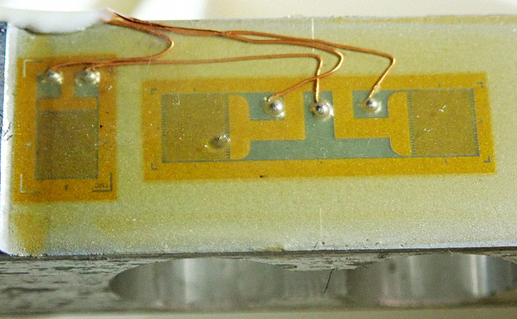(cited from the DIY climate chamber thread)
“cell should have a temp. compensation” - should have, or has ? ;)
What they call “temperature compensation” is a (at least fifth) sixth strain gauge (shown leftmost in image). By turning them 90° to the main strain gauges’ orientation and placing in a solid area, they “substract” a non-strain-introduced force: thermal expansion of the scale body matter.
In the part shown of LAB-H-B datasheet, you see a compensated temperature range (-10…+40°C), and you see lots of different errors (most important here: the two lower ones: “temp effect on…”).
The “compensated temperature range” reflects the applicability range for mentioned specific temperature-related errors - it does not mean that all temperature-introduced errors have gone and are compensated to zero !
So, temperature compensated strain-gauge-based weight cells with at least IP65 are a must when operating them outdors all year long, beyond any indoor some-minutes-on, tara-when-needed use case. But you still will observe temperature effects on gain and offset, but now you know their max. span.

(some error calculation and statistics on this cell here (for idealized 4 cells, but formula adapts; depending on use case, you might want to neglect error terms like hysteresis)
As every ADC, the HX711 has initial gain error and offset error as well as temperature effects on gain and offset (and they drift in time). But all this isn’t half as worse as the in-the-maker-scene widely underestimated effects of so called “parasitic thermocouples” when dealing with strain gauges. With your DIY climate chamber, you will get closer to that thermoelectric Seebeck effect, which rules here on many places as long as the signal is in the analog domain.
This gets even worse when considering self-heating effects of the strain gauge… but: next thread or FAQ entry ;)
More on these things to come, as we admins are about to prepare a FAQ on these complex things… aren’t we? ;)

